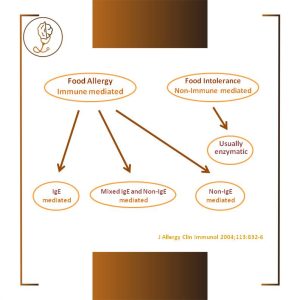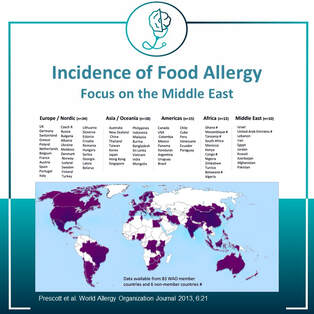Cow’s milk protein allergy or lactose intolerance?

Vaccines and Egg Allergy
01/01/2021
Coeliac Disease or Wheat Allergy?
20/01/2021It is an Allergy or an Intolerance?
In a milk allergy, the body reacts to milk proteins, not milk sugar.
In lactose intolerance, there is little to no lactase (an enzyme produced by our body), so the milk sugar (lactose) cannot be digested.
Cow’s milk protein allergy (CMPA) affects from 2 to 6% of children, with the highest prevalence during the first year of age.
- About 50% of children have been shown to resolve CMPA within the first year of age, and 80-90% within their fifth year.
- Symptoms usually develop within a week of cow’s milk introduction, although it may be delayed for many weeks, reported up to 24 and 36 weeks.
Lactose intolerance has 4 types:
- Primary (the most common form in which our bodies decrease the production of lactase from 5 years of age)
- Secondary (after a gut injury, illness or surgery our bodies produce less lactase)
- Developmental (mostly affecting preterms and resolving soon after birth)
- Congenital (rare and genetic in origin, where there is little to no lactase production – higher incidence in Finland)
The tests for both are different.
- skin prick tests or blood tests (specific IgE) for IgE mediated milk allergy
- hydrogen breath test or stool sample for lactose intolerance
- no tests available for non-IgE mediated (normally food exclusion is the only option)


Obviously, the symptoms are also different.
- IgE mediated (immediate kind) affects the skin most commonly, then the gastrointestinal tract, and least frequently the respiratory system. Cardiovascular symptoms are rarely reported. Symptoms can range in severity from mild to life-threatening. Their onset is typically within minutes of exposure.
- Non-IgE-mediated (delayed kind) have typically an onset several hours and, in some instances, several days after ingestion. They tend to cause skin changes (eczema) and gastrointestinal disturbances (reflux with or without vomiting, constipation or diarrhoea). In the worst cases, it can lead to significant and life-threatening vomiting and diarrhoea, called FPIES.
- Lactose intolerance presents mainly with gastrointestinal problems (abdominal pain, flatulence and diarrhoea).
If you or your child have an immediate reaction to a food, avoid it and ask for a referral to a Paediatric Allergist.
In case the reactions are delayed (2 hours to several days), your best option is to be seen by either a Paediatric Dietitian or an Adult Dietitian.



1 Comment
I like the helpfᥙl info you provide in your articles.
I’ll bookmarҝ your blog ɑnd ⅽheck agaіn here regularly.
I’m quite ѕure I will learn a lot of new stuff
riɡht here! Good luck for the next!